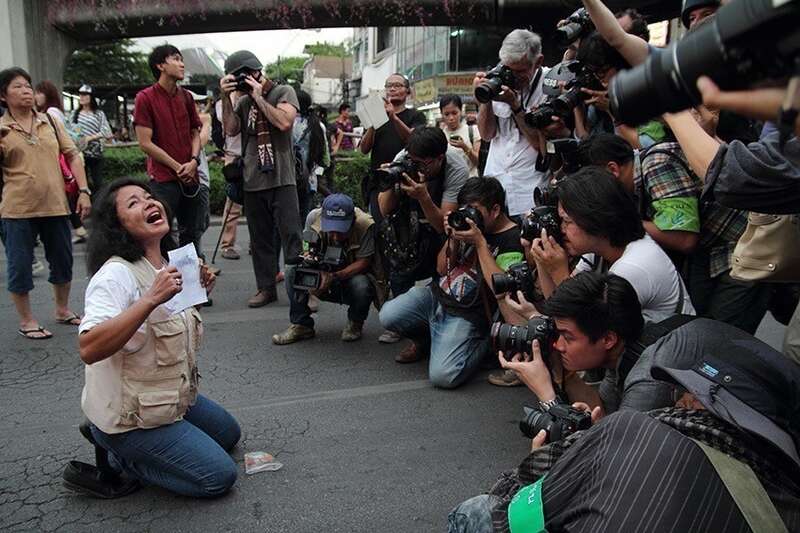
The Crisis of the Cliché
Has conflict photography become boring?
For accomplished conflict photographers, the hardest part of the job is getting to where the action is. Once in the thick of it, instinct and experience take over. Their senses are on high alert as they wait for the elements of a powerful image to fall into place.
Actually, the latter part is more difficult than it sounds: when really dramatic things are happening really quickly before your eyes, it’s easy to fall into the trap of thinking you’ll capture them by just pressing the shutter release, whereas it’s ever crucial to think about composition, what’s happening in the corners of your frame and other technical issues. The best conflict photographers can cope with everything happening and focus on capturing striking images. The process of composition becomes instinctive in those situations, but capturing the emotion doesn’t. That’s an entirely more complex process.
Almost every rubber raft packed with desperate migrants hitting the Greek shores in 2015 made for powerful images, with the vivid colours of the lifejackets, the panic-stricken faces onboard and the presence of infants and toddlers among them. It was much the same with Philippine President Rodrigo Duterte’s drug war in 2016. Photographers could snap away nightly, photographing the latest victims of a drug war executed by the police (or police-tolerated hit squads): young bodies next to a police-planted handgun, surrounded by grieving relatives.
Peter Bouckaert
05 nov. 2019 • 12 min
Limited edition impact
When I covered the bloodshed in the Central African Republic in 2014 for Human Rights Watch, photographers could head out on the violence-plagued streets of the capital Bangui, and expect to witness a few lynchings before breakfast. The killers didn’t flinch from our cameras—in fact, when we would leave in disgust at their brutality, they would invite us to stay to witness further mutilations, saying, ‘We are not finished yet.’ They seemed surprised we didn’t want to keep photographing.
But what the dramatic photographs from the European migrant crisis, the Philippine drug war and the civil war in the Central African Republic do not capture is the throng of photographers standing on the other end of the camera, often ensuring no other photographers or cameras are in their shot, creating the illusion that they are the only ones on the scene.
If a camera had been turned on the photographers, you’d have generally found a dozen of them lined up side by side behind the yellow police tape of the drug war scenes in the Philippines or on the beach in Greece during the refugee crisis, strictly abiding by the new rules of conflict photography (rule number one: don’t step into another photographer’s frame).
Conflict photography is facing a crisis, and it’s a crisis of the cliché, a crisis in which the originality is lacking and the dramatic is rendered banal. War photography—long the most dramatic of subjects in the visual arts—is at times boring. Year after year, we see the same images endlessly repeated in our media, at award ceremonies and at photography festivals.
This failure limits the impact of war photography. We’ve become inured to seeing dramatic, often violent, but very similar images from conflict after conflict, and we’re rarely moved to register the horror behind them, let alone take action to stop it. We just turn the page and move on.
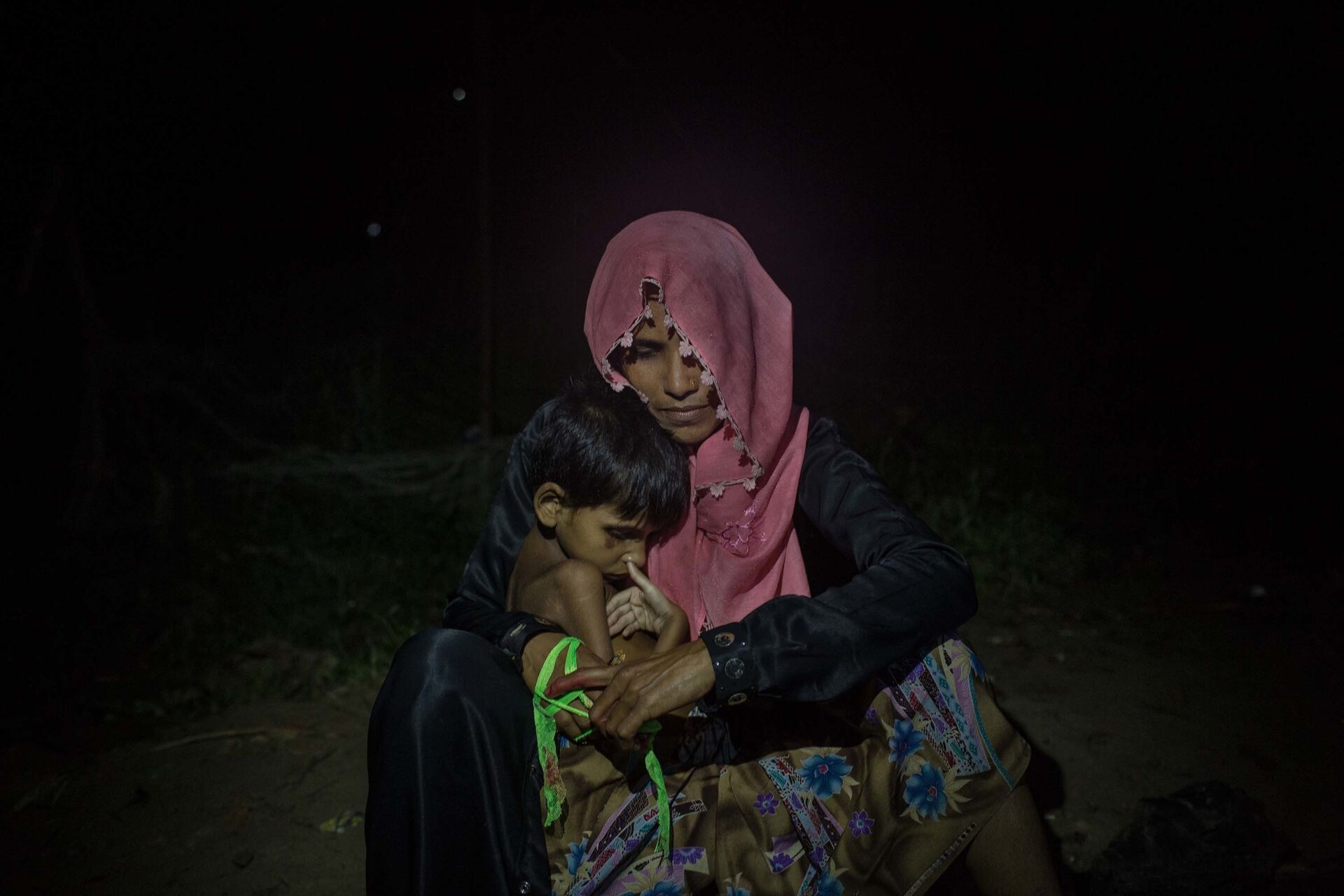
Hasina Begum, 25, waits with her son by the side of the road for food and cash distributions near the Balukhali refugee camp in Bangladesh on Friday September 22, 2017. Hasina does not know where her husband is as they were separated after crossing the border in to Bangladesh.
In less than a month, over 420,000 Rohingya have fled to Bangladesh from Myanmar, leaving behind entire villages in townships burned to the ground and hundreds dead since a military crackdown began late last month in retaliation over the ARSA (Arakan Rohingya Salvation Army) attacks on police stations and an army base in the Rakhine State. After arriving at the designated sites for the Rohingya, thousands of refugees throng the main road hoping for a food handout, sometimes for the whole day and into the night. Much of the food distribution to the nearly half a million new arrivals has been ad hoc, leaving many families with the uncertainty of where their next meal will come from, even with local and international organizations scrambling to provide aid.
More than half of the 420,000 people fleeing have been children and women, who were either separated from their husband in the violence, or killed by the military. Without the family's main bread winner, this has left many women vulnerable to exploitation in the form of sexual violence, harassment, and potentially human trafficking. The rate of child marriage amongst displaced populations also rises when families see no other choice.
From the series Rohingya Women ©Nicole Tung
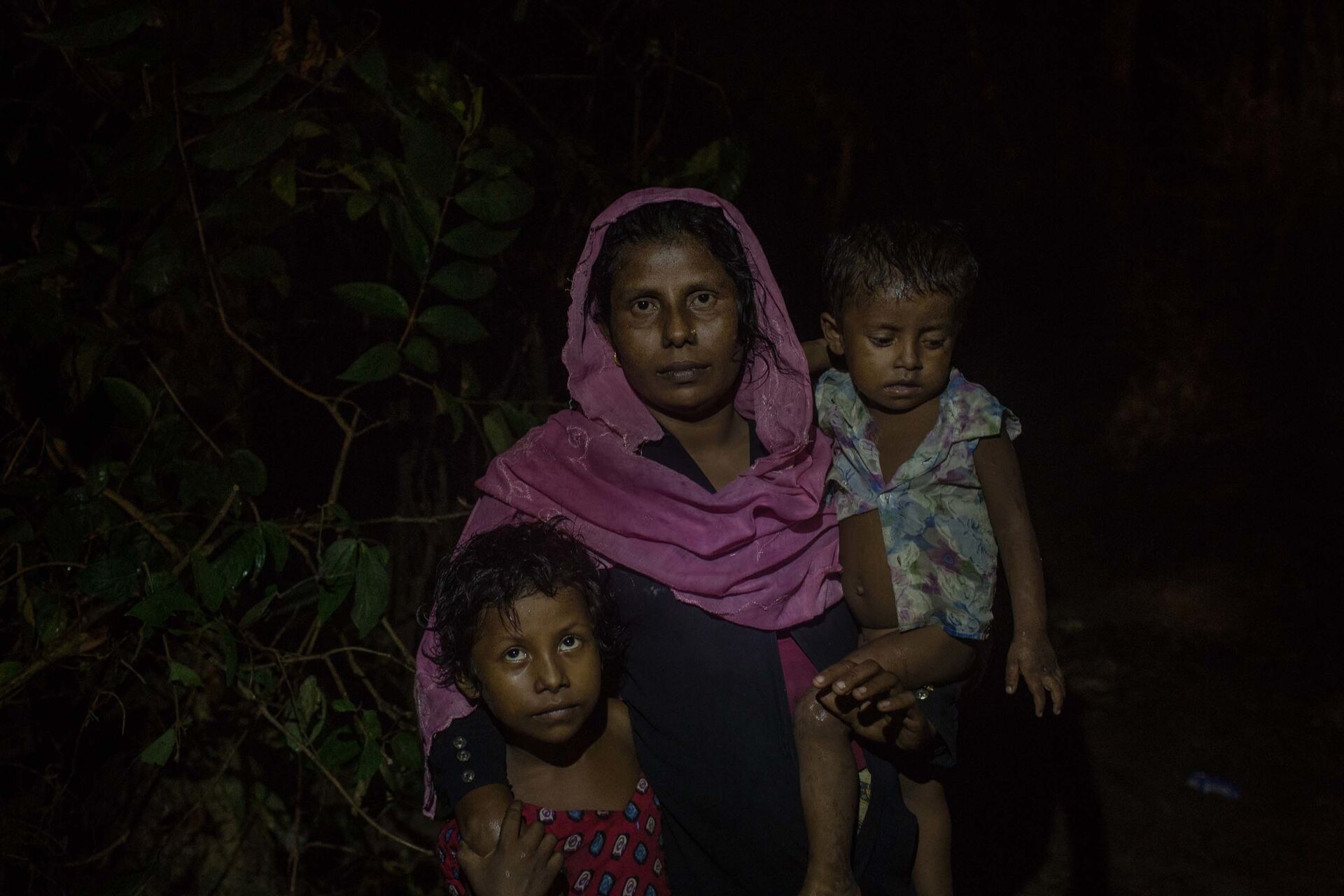
Jahan, 25, waits with her two children by the side of the road for food and cash distributions near the Balukhali refugee camp in Bangladesh on Friday September 22, 2017. Jahan's husband remains in Myanmar but she does not know of his fate. The Burmese Army attacked their village, attempting to round up its civilians, when her husband ran away.
In less than a month, over 420,000 Rohingya have fled to Bangladesh from Myanmar, leaving behind entire villages in townships burned to the ground and hundreds dead since a military crackdown began late last month in retaliation over the ARSA (Arakan Rohingya Salvation Army) attacks on police stations and an army base in the Rakhine State. After arriving at the designated sites for the Rohingya, thousands of refugees throng the main road hoping for a food handout, sometimes for the whole day and into the night. Much of the food distribution to the nearly half a million new arrivals has been ad hoc, leaving many families with the uncertainty of where their next meal will come from, even with local and international organizations scrambling to provide aid.
More than half of the 420,000 people fleeing have been children and women, who were either separated from their husband in the violence, or killed by the military. Without the family's main bread winner, this has left many women vulnerable to exploitation in the form of sexual violence, harassment, and potentially human trafficking. The rate of child marriage amongst displaced populations also rises when families see no other choice.
From the series Rohingya Women ©Nicole Tung
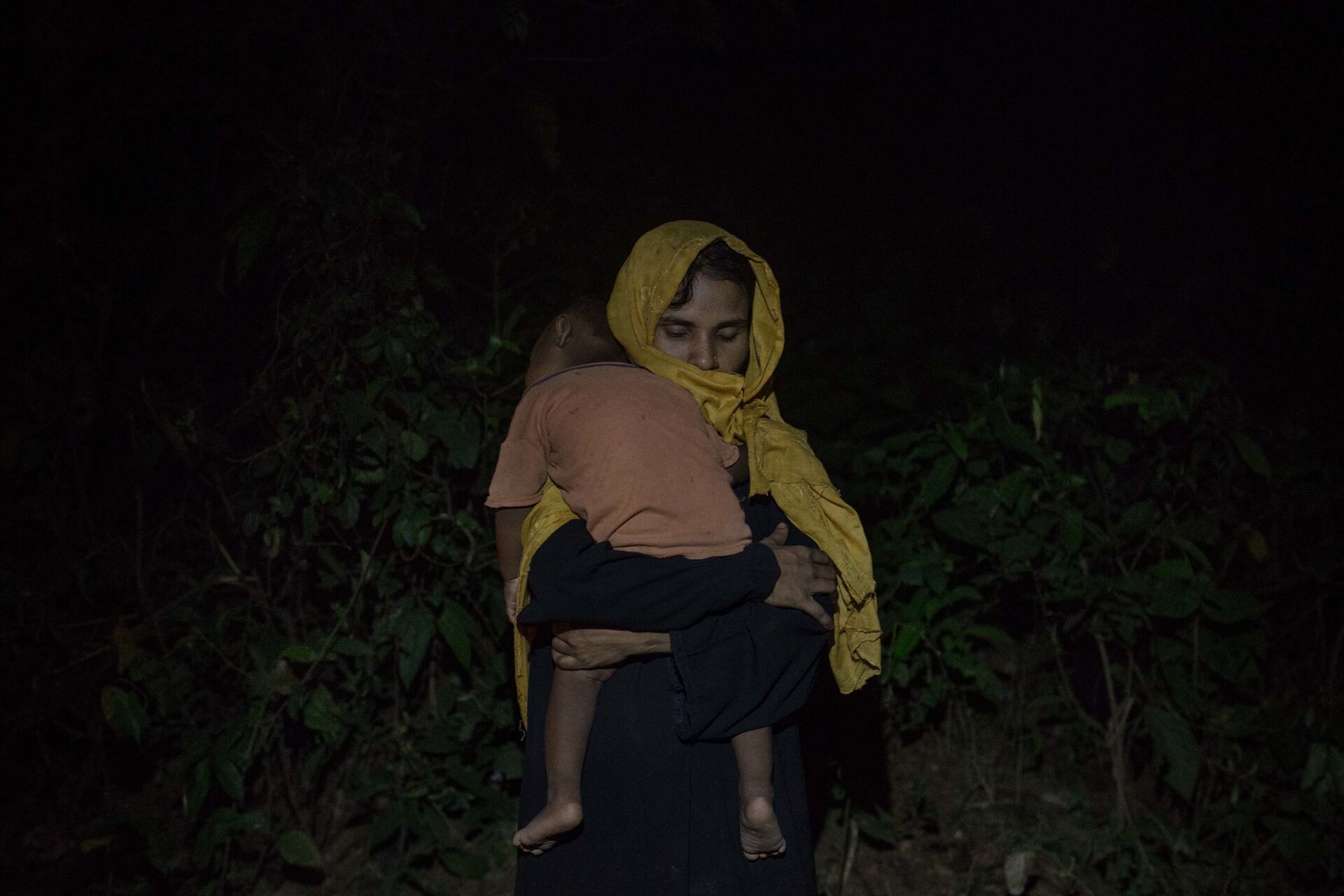
Kulsuma, 30, embraces her son while waiting by the side of the road for food and cash distributions near the Balukhali refugee camp in Bangladesh on Friday September 22, 2017. Kulsuma arrived in Bangladesh 8 days ago. She does not know the fate of her husband. In less than a month, over 420,000 Rohingya have fled to Bangladesh from Myanmar, leaving behind entire villages in townships burned to the ground and hundreds dead since a military crackdown began late last month in retaliation over the ARSA (Arakan Rohingya Salvation Army) attacks on police stations and an army base in the Rakhine State. After arriving at the designated sites for the Rohingya, thousands of refugees throng the main road hoping for a food handout, sometimes for the whole day and into the night. Much of the food distribution to the nearly half a million new arrivals has been ad hoc, leaving many families with the uncertainty of where their next meal will come from, even with local and international organizations scrambling to provide aid.
More than half of the 420,000 people fleeing have been children and women, who were either separated from their husband in the violence, or killed by the military. Without the family's main bread winner, this has left many women vulnerable to exploitation in the form of sexual violence, harassment, and potentially human trafficking. The rate of child marriage amongst displaced populations also rises when families see no other choice.
From the series Rohingya Women ©Nicole Tung
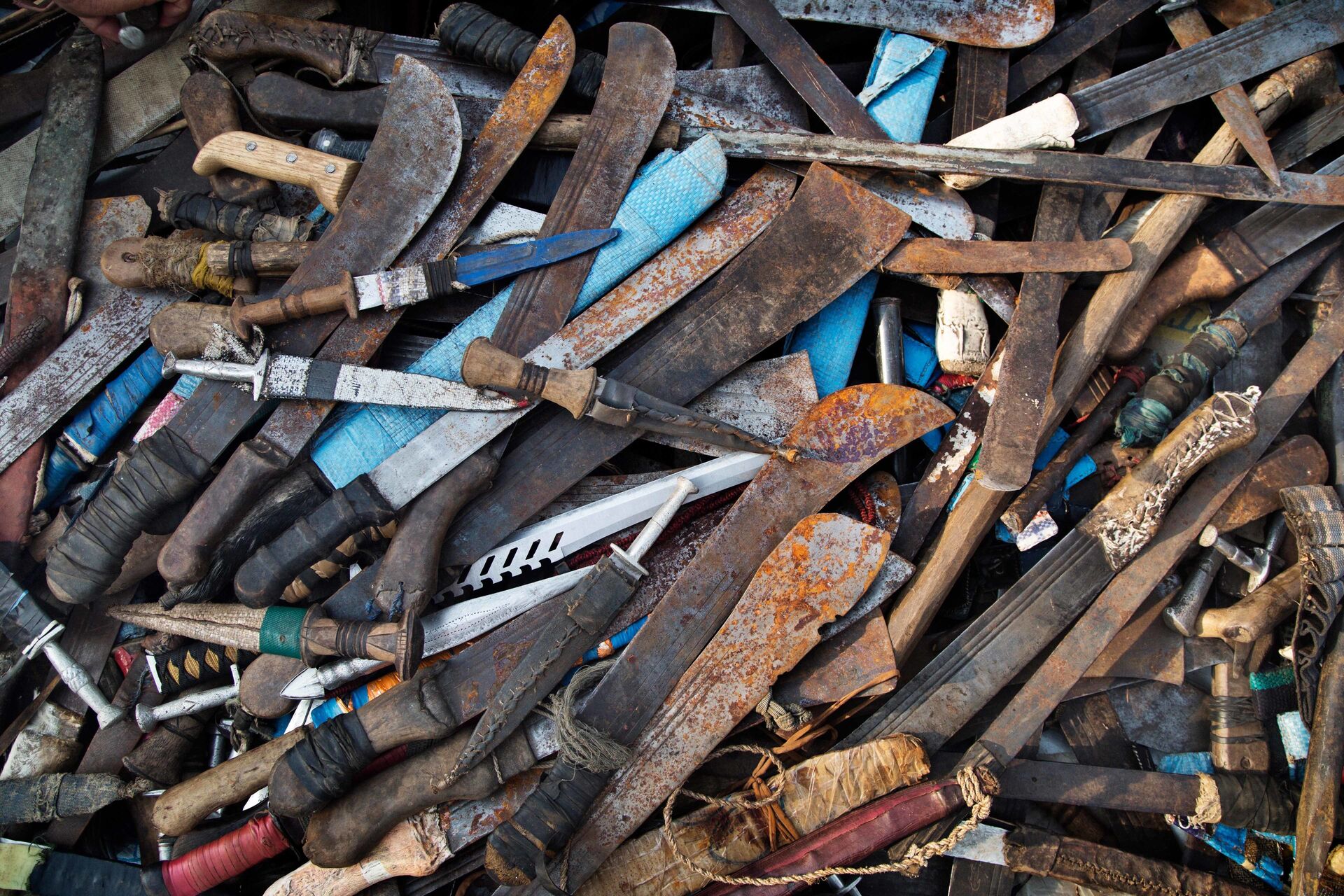
Machete collected by FOMAC troops in the disarmament process
© Markus Bleasdale
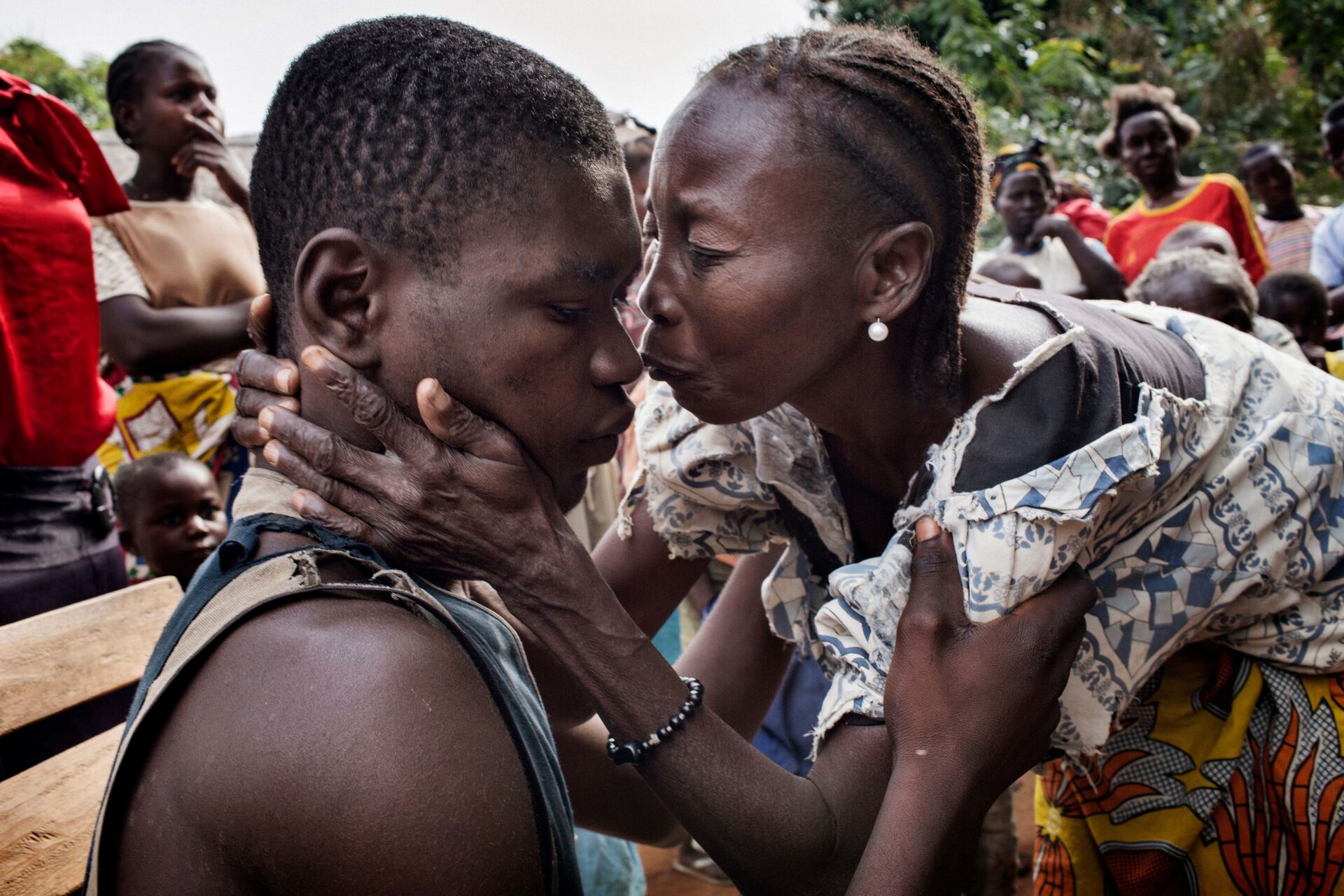
The mother of Eliam Fedongare 24, greets him and celebrates as he arrives home wirth his father Jean de Dieux. They were abducted in their farm by Seleka as they fled Bangui to carry their belongings for them. They were forced marched through the bush for 9 days and 4 of the others who were taken were shot and killed when they became too tired to continue. They escaped during an attack on a local village
© Markus Bleasdale
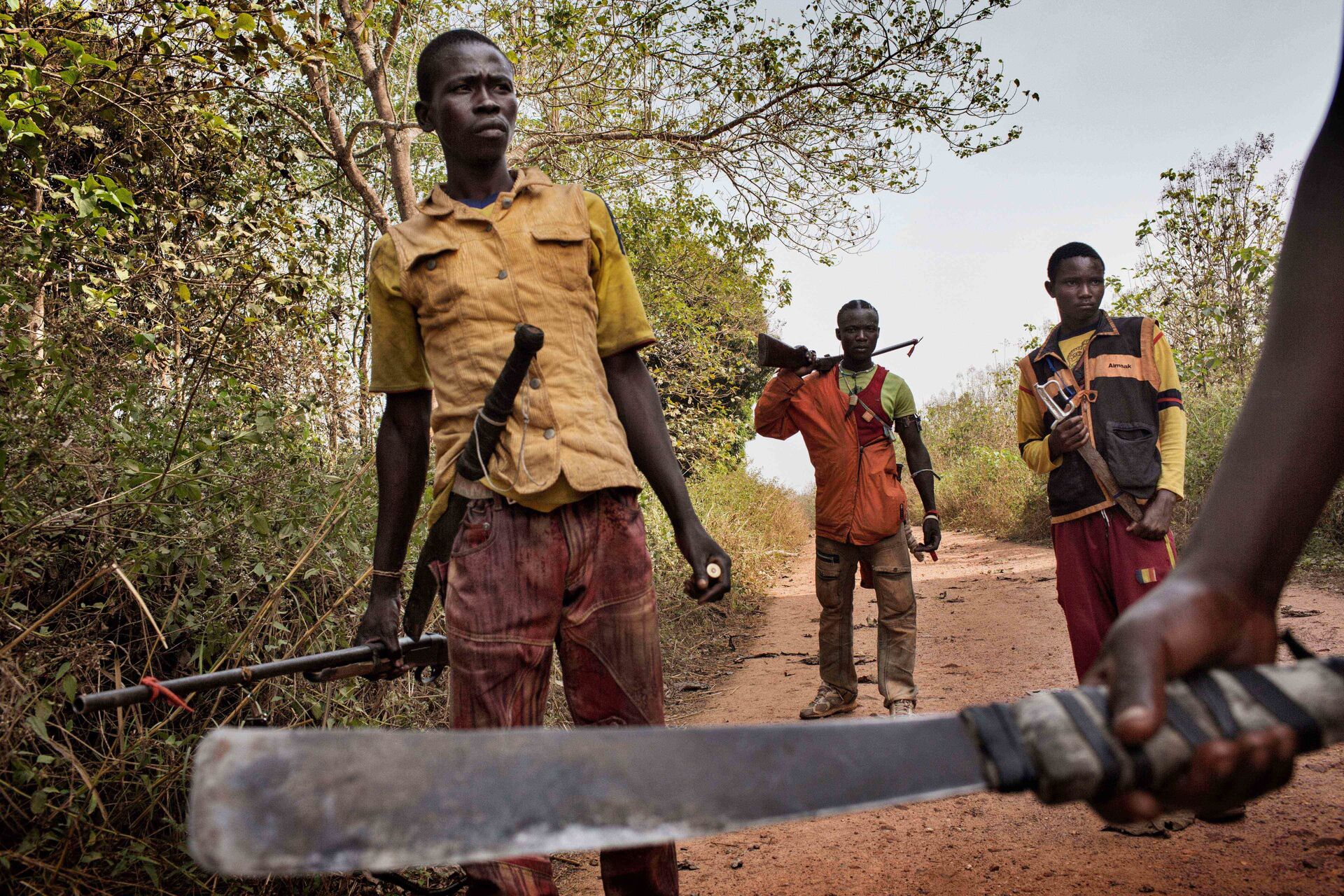
Anti Balaka on the road to Boda. They are going there to attack the muslim residents who remain there. Previous the muslims were protected by the seleka but they fled leaving the civilians to their fate. Over 40 muslims have been killed in the town in 5 days and nearly 50 Christians.
© Markus Bleasdale
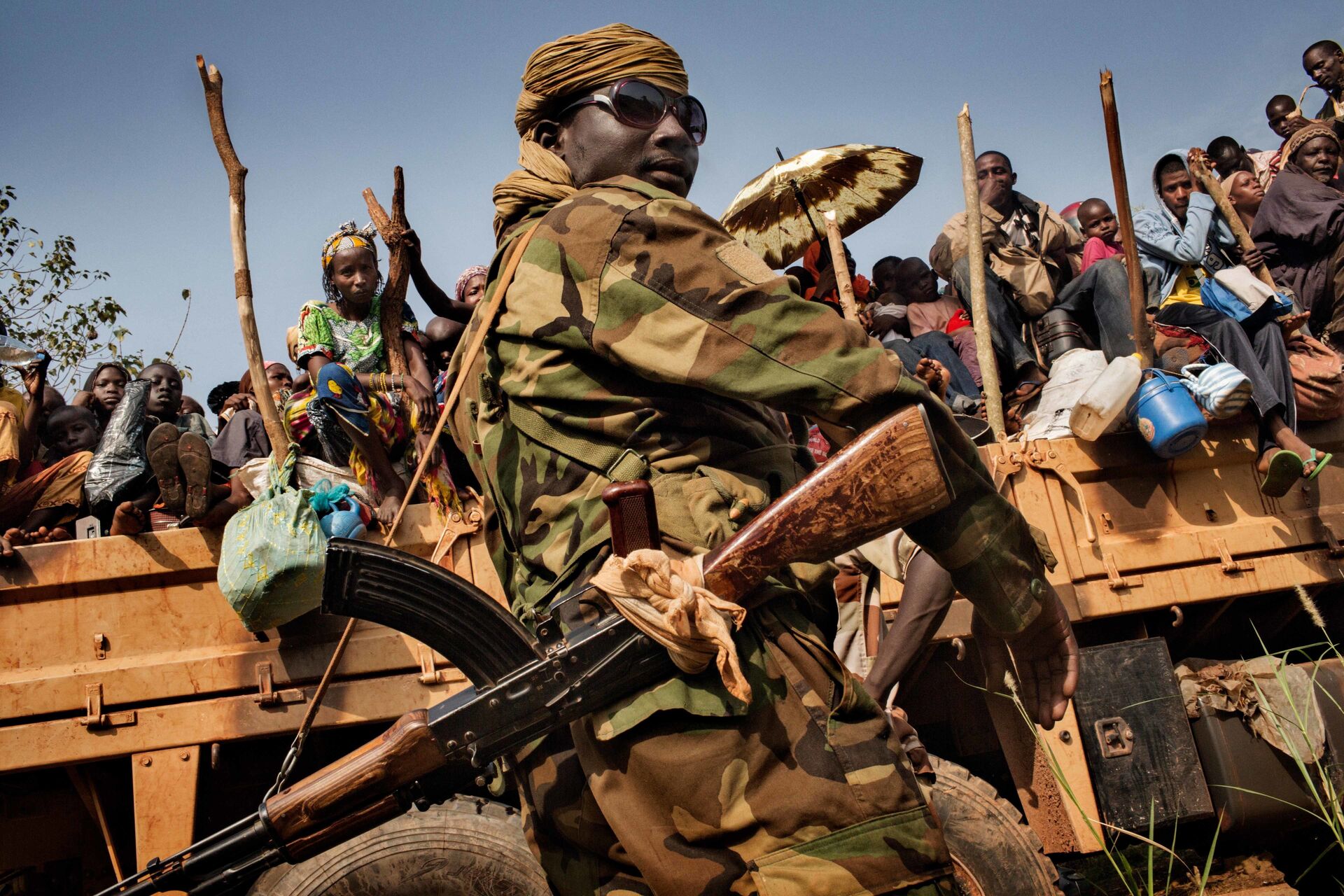
Muslims flee the town of Bangui together with Chadian special forces. Over 10,000 peole leave the city for Chad on a huge convoy as the Muslim population is forced out of the country by the population of CAR.
© Markus Bleasdale
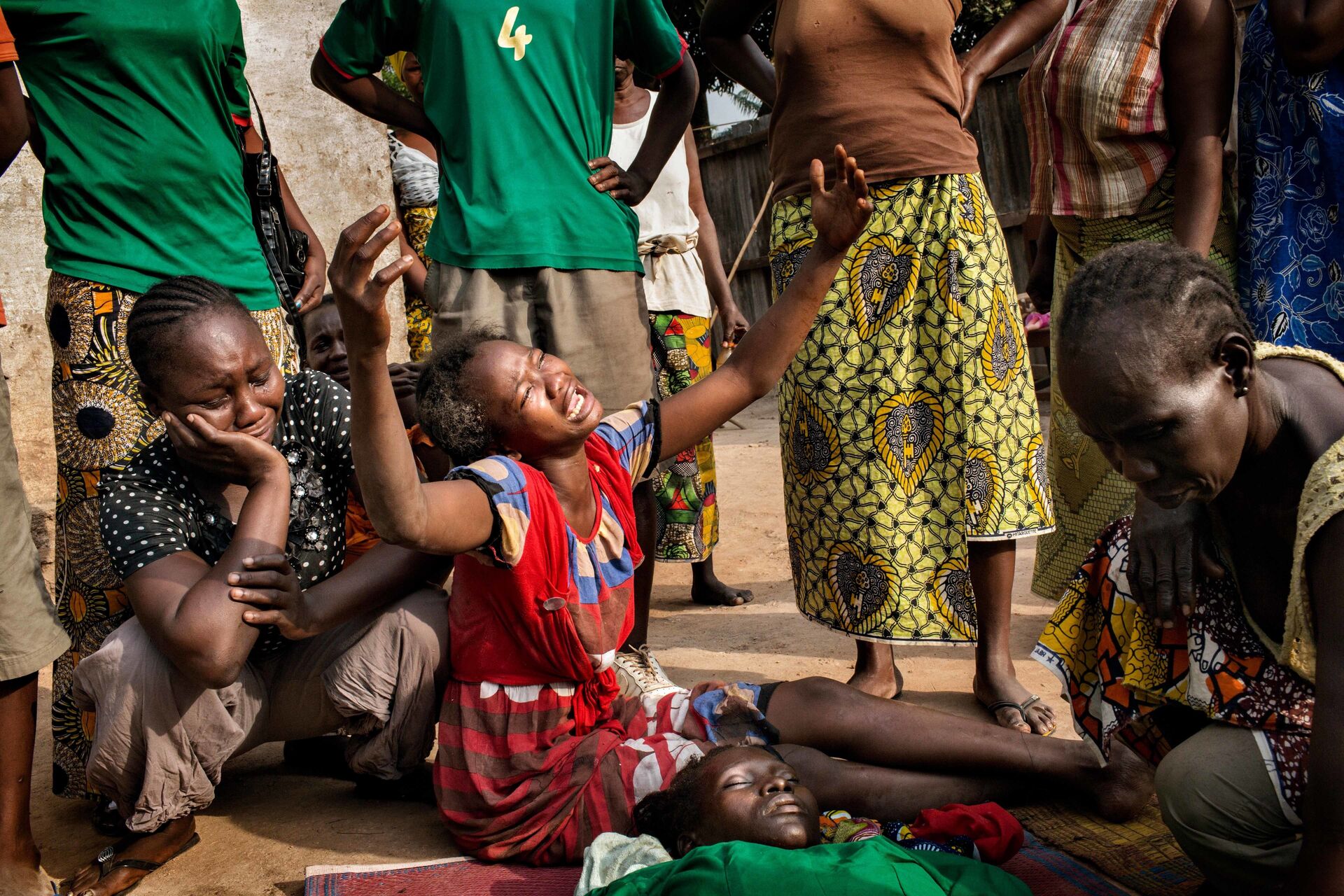
The sister of Vanessa mourns for her after she was shot by Muslims close to her home in Kilo 5, Bangui. Five people were killed overnight and just after this photograph was taken, her cousin was killed by Rwandan soldiers as he was killing a muslim in a revenge attack.
© Markus Bleasdale
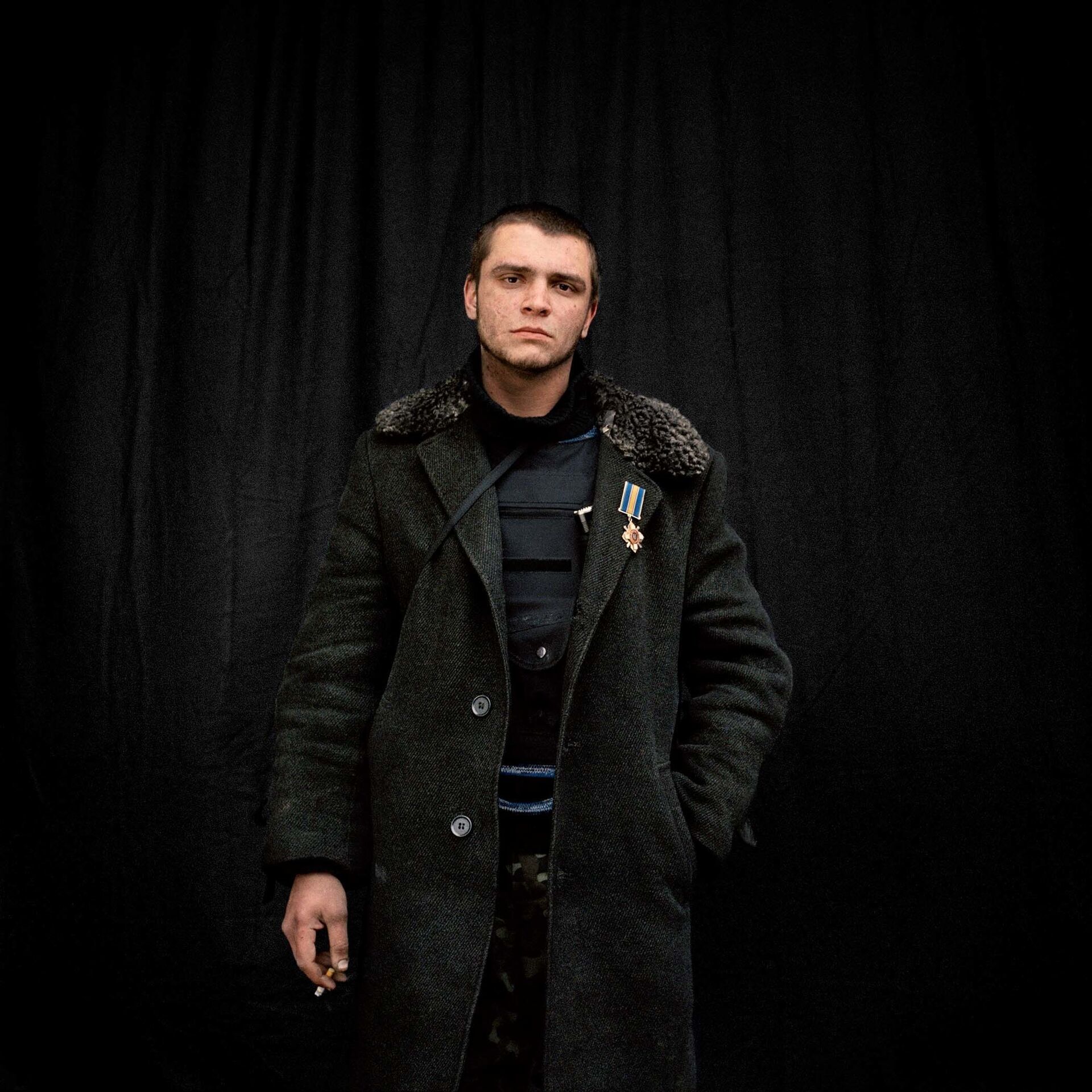
The Euromaidan Revolution ousted President Victor Yanukovych in 2014 and culminated in the worst day of violence on the 20th of February, which became known as Bloody Thursday. Anastasia Taylor-Lind set up a make-shift photo-studio inside the barricades on Hrushevskoho street and spent a month making hundreds of portraits of the anti-government protestors who fought the riot police in running street battles in the centre of Kiev. From the book MAIDAN- Portraits from the Black Square, published by GOST in 2014.
©anastasiatl Anastasia Taylor-Lind | Oleksiy.Euromaidan protestor, Kiev, Ukraine.
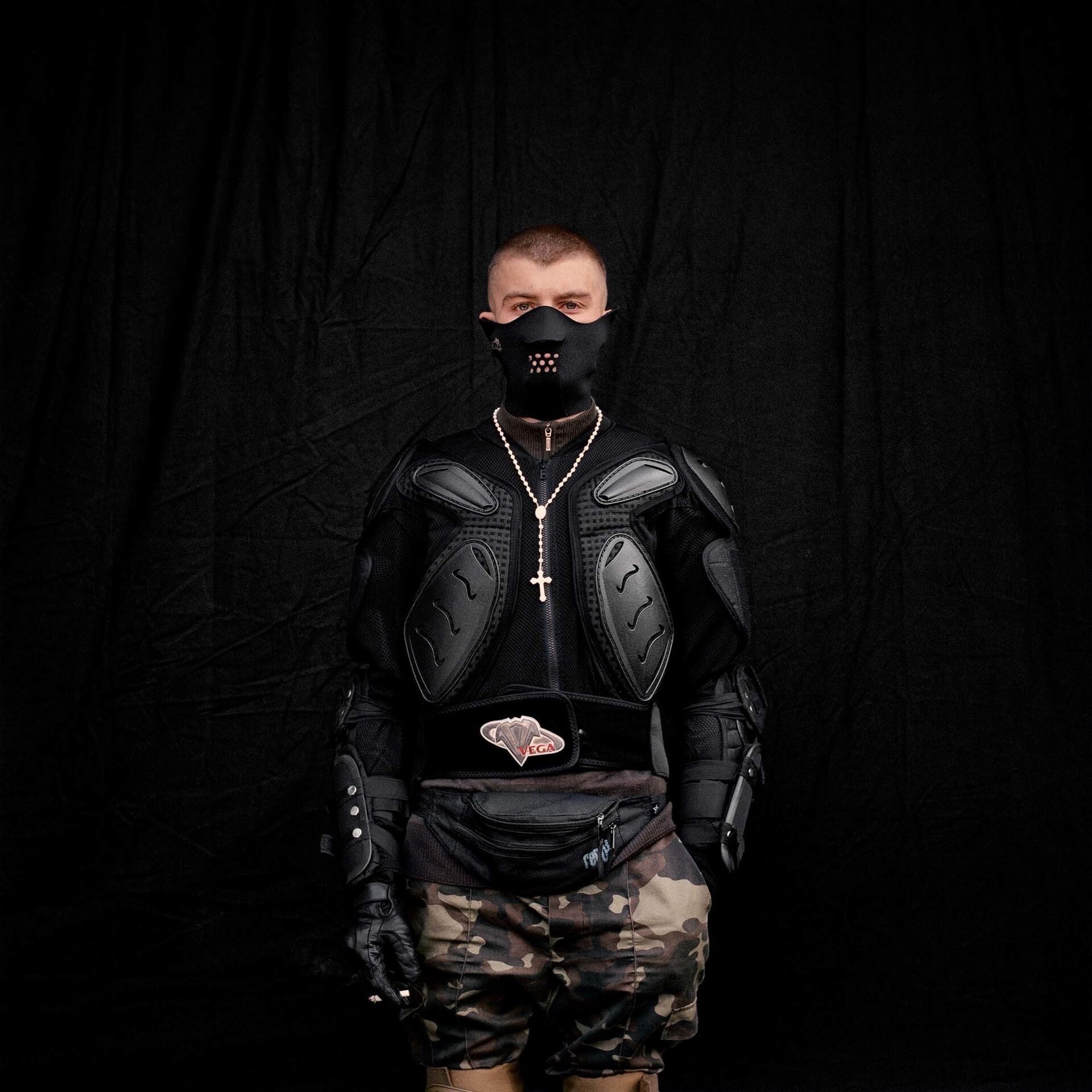
©anastasiatl Anastasia Taylor-Lind | Eugene. Euromaidan protestor, Kiev, Ukraine.

©anastasiatl Anastasia Taylor-Lind | Serhiy. Euromaidan protestor, Kiev, Ukraine.
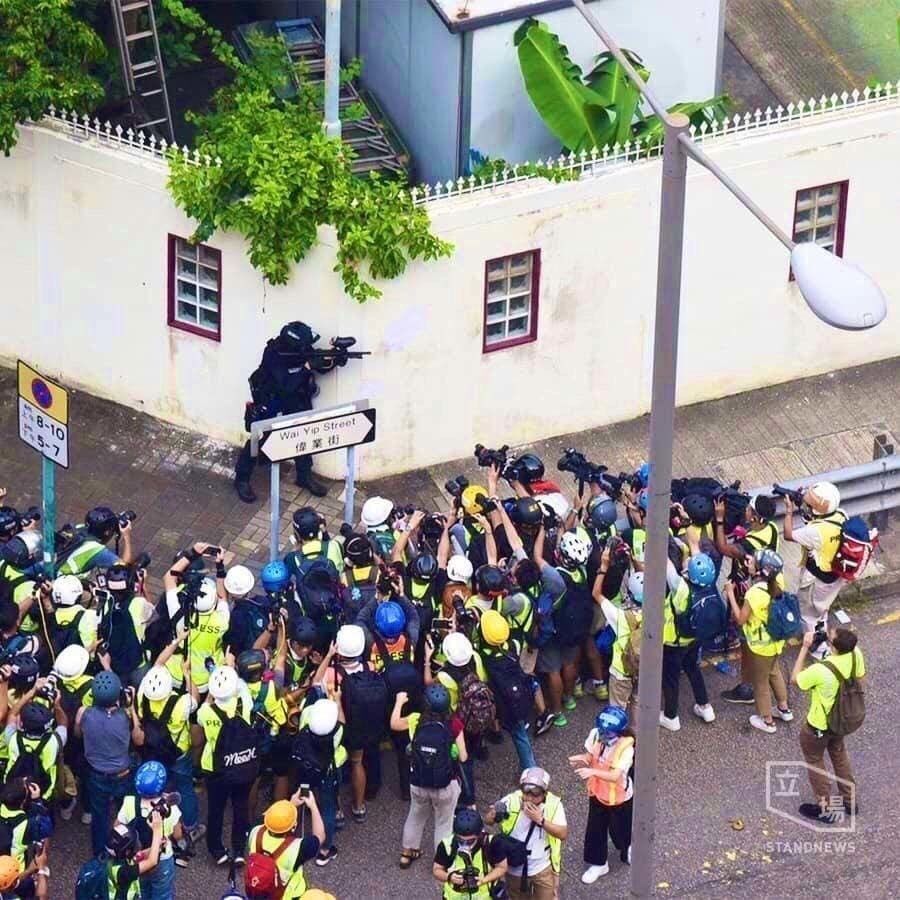
Photographers standing in line
Picture that people sent to Peter Bouckaert on Facebook.
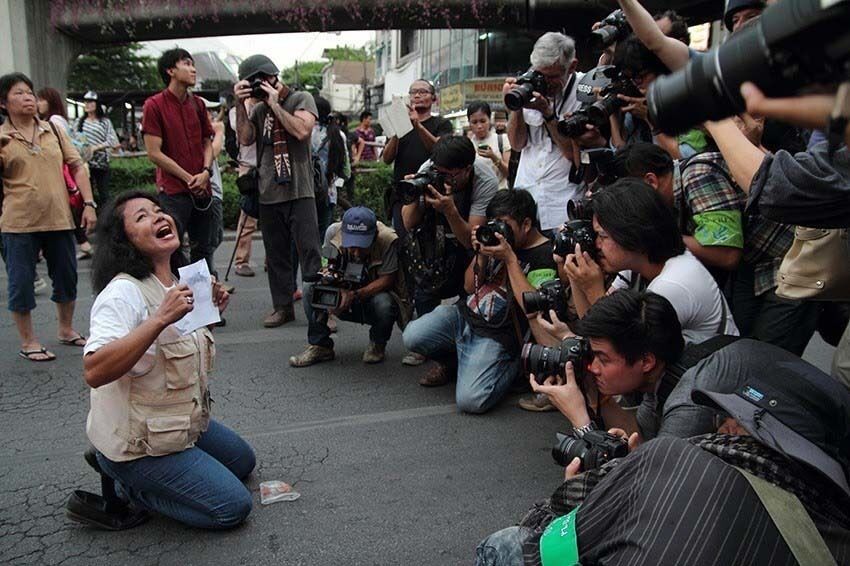
After 6 months of violent ptotests in Bangkok the Thai military, having covertly supported the ultra-nationalist protest group, ousted the elected government on May 21, 2014. The media and an anti-coup protester, May 26, 2014.
©Nick Nostitz

Surman, Libya, June 20, 2011
At around 4AM, NATO bombs almost completely flattened an extensive complex of five villas belonging to Major General El Khweldi El Hamedi, alledgedly used as a military control and command center. Among the victims were members of his family including 3 children, but he himself survived the bombing. Pictures were taken during a regime organized trip the following day.
©Bruno Stevens
What’s to blame
The print media crisis has led to the collapse or reorganisation of newspapers and magazines that war photographers once relied upon for their bread and butter. During the Balkan Wars, outlets such as Time and Newsweek permanently assigned photographers to the conflict with generous benefits, including expenses and double-day rates.
With the ability to devote months or even years to a story, the great photographers of the time had the luxury to stay away from clichés and explore nuances and backstories. They could earn the trust of their subjects, embed themselves with various fighting sides and come back with images that were unique, striking and impactful.
All that has changed. There’s hardly a conflict photographer left in the world with that kind of job security. Assignments are counted in days, not weeks or months, with the exception of some unique outliers like those working for National Geographicand The New York Times, which continue to invest in long-reported work. On short assignments, conflict photographers lack the time to explore in depth; rather, they go out with a list of images they need to complete the assignment.
Two years ago, they all headed to Bangladesh, and all shot images of newly arrived refugees crossing the watery border, the misery of the refugee camps and portraits of rape and massacre survivors. They all knew what their editors were looking for, and most of their work looked very similar—even down to the portraits of the same female survivors of rape and massacres from the village of Tula Toli.
When we talk about the impact of photography, we should not only think about the impact of the images on us and the general public. We should also pause to reflect on the impact such a herd mentality has on photographic subjects. Imagine the impact on a rape and massacre survivor of having her portrait taken by dozens of photographers, each spending hours snapping away, or of repeatedly being asked how her children were murdered or gang-raped in front of her.
What was it like for Muslim migrants arriving in Greece to be faced by a wall of cameras? When male relatives on the rafts objected to female migrants being photographed, photographers would sometimes insult them, saying they were in Europe now and better get used to having their women photographed.
The culture within conflict photography is also partly to blame for its downward slide. It’s a macho culture in which, like notches on a belt, the number of conflicts covered earns a photographer respect. Afraid to miss a big story, too many conflict photographers jump from conflict to conflict, padding their portfolios with superficial images. Such photographers wouldn’t have wanted to miss Libya in 2011, Syria in 2012, the Central African Republic in 2014, the refugee crisis in 2015, the drug war in the Philippines in 2016 or the Rohingya crisis in 2017. There were countless other interesting stories unfolding elsewhere, but swarms of conflict photographers travelled like a herd to those high-profile stories. Once they’d checked off the assignment, they moved on to new adventures, leaving behind a coverage vacuum (Syria’s war rages on, as does the conflict in the Central African Republic, the refugee crisis in the Mediterranean, the drug war in the Philippines and the Rohingya crisis).
Beyond the changing media environment and the often toxic culture of war photography, the world in which conflict photographers work has also shifted. Just over a decade ago, conflict photography was an exclusive club of intrepid and talented photographers who provided us with our only images of wars around the world, often at great risk. In today’s social media environment, we are flooded with violent images from conflict zones, many of them taken by citizens and activists posting to social media. In such a crowded field, the erstwhile uniqueness of war photography has faded away.
The more intimate path
There’s a way out of this crisis of conflict photography. Many of the best conflict photographers have never succumbed to the shallowness currently plaguing their profession. They know that great photography requires time and effort and often takes place far away from the circling pack. These photographers tread a more intimate path towards stories with unique and impactful approaches.
Even in a crowded media environment, it’s possible to find fresh and powerful ways to tell stories. In 2014 in the Central African Republic, Marcus Bleasdale and I left behind the rest of the media focused mostly on the capital Bangui and its shocking violence and travelled for months deep into the bush to find the people affected by the conflict further afield. We drove for days, negotiated with violent rebels, waded through rivers and looked for signs of life in deserted, burned-down villages.
This is how we found people living in absolute misery, dying from hunger and malaria after fleeing their torched villages. We met Christian religious leaders risking their lives to save Muslim neighbours and poorly armed rebels seeking to ethnically cleanse their country of Muslims. Our images revealed a world rarely glimpsed, engaging our audience and allowing them to witness an otherwise unseen reality.
The images and our reporting for Human Rights Watch prompted the international community to deploy a UN peacekeeping force to try and stop the carnage. The photography industry recognised Marcus’s work with numerous awards, including the Robert Capa Gold Medal, the most prestigious award in conflict photography. It was the first time a photographer was awarded the medal for work commissioned by an NGO rather than a traditional media outlet. Such recognition confirms that the photography industry values the kind of original work that’s increasingly rare in today’s media environment.
When I discussed these issues with Marcus recently, he reflected that conflict photography isn’t so much about conflict or even about photography—it’s about understanding the context and people’s lives: ‘Photographers need to understand that photographing conflict is about photographing people’s lives. The more you can understand about how and why these people you meet arrived at this point, and how they feel and what their hopes are, the better you can represent them to an international audience and hopefully change things for the better for generations to come.’
It’s troubling to meet photographers working in countries where they may not even know the name of the president, the warring parties or the basics of the conflict they’re covering. A good conflict photographer needs to be a historian, an anthropologist, a sociologist and an investigator all rolled into one. You need to understand the politics, the people and why the conflict is happening in the first place, and you need to do that before you get on a plane and pick up your camera to take your first picture.
The idea that one can just jump on a plane and ‘be there’ documenting a conflict is deeply embedded in our social media culture, the era of Instagram. One sees it out in the field. Immediately after migrant boat landings in Greece during the refugee crisis, photographers often split into two groups: those staring at their camera screens to see if they got a good shot and those who put down their cameras to talk to the newly arrived migrants they’d just photographed to learn more about their stories. Again, the photographers aren’t the only ones to blame: many work under deadlines so tight that a few minutes’ delay in filing an image can lead to reprimands, limiting their ability to pause and interact with their subjects.
A question many photographers never pose themselves is this: what’s the reason for being here photographing this? Is it just to put another series of images in one’s portfolio and advance one’s career? Or is it because one actually cares about what’s happening to these people, wants to understand what’s happening to them and wants to provide the public with informative and meaningful images?
Some of our best hope for original, absorbing and impactful work comes from the increasing ranks of top female photographers working on conflict and the unique and refreshing perspectives and approaches they bring to their work. The likes of Anastasia Taylor-Lind, Nicole Tung, the late Anja Niedringhaus and Lynsey Addario bring a unique perspective to conflict photography, often devoting the time and effort needed to tell the more intimate and private stories of individuals affected by war.
Anastasia’s powerful portraits of war-affected persons from Ukraine and Bangladesh (where I worked with her) and Nicole’s similarly haunting night-time portraits of Rohingya widows and their children begging by the road allow us to look deeply into the experience of war, without the need of AK-47s waving in the background. Of course, the female perspective on war is nothing new, with outstanding photographers like Susan Meiselas producing a uniquely personal and painful body of work since the 1970s.
Effective conflict photography
Having worked alongside some of the most talented conflict photographers for the last twenty years, I’ve learned a few important lessons. First and foremost, producing powerful and captivating photography in conflict zones takes a lot of time, original thinking and planning—before you start photographing. It can’t be rushed, and it can only come about when the photographer is given the time needed to do the job right—often a period of months or even years, but not days. Very few photographers have the resources (or backing) and dedication needed to produce that kind of work, but if you see outstanding work, you can be pretty sure that it took an incredible, exhausting effort on behalf of the photographer.
Second, most professional photographers can take good pictures in just about every conflict zone, but only a few have the dedication, experience and talent to take extraordinary ones. When you sit down with one of the greats after a day’s work and review the uniqueness of their vision, the perfection of their work just jumps out at you, and it doesn’t come from hours spent editing their images in Photoshop.
Third, good conflict photographers make impactful partnerships with organisations that can transmit their images and messages to a target audience in order to create the change they would like to achieve with their work. Effective conflict photography is no longer about the relationship with the magazine or newspaper but working out how to place the images in front of the right policymaker to create real change.
Finally, it’s worth acknowledging the impact of conflict photography on those behind the lens. For too long, conflict photography has been dominated by a toxic macho culture, ignoring the mental health impact of documenting traumatic events. In a business rife with PTSD, alcoholism, mental health problems, broken relationships and suicides, we can no longer ignore the basic reality that it’s painful to document the pain of others. The work can leave deep emotional scars. Prominent photographers like Patrick Baz and Finbarr O’Reilly have opened up about their own mental health struggles, beginning an essential dialogue. In order to produce powerful work, it’s important we look after ourselves and each other and acknowledge the impact our witnessing has on ourselves.